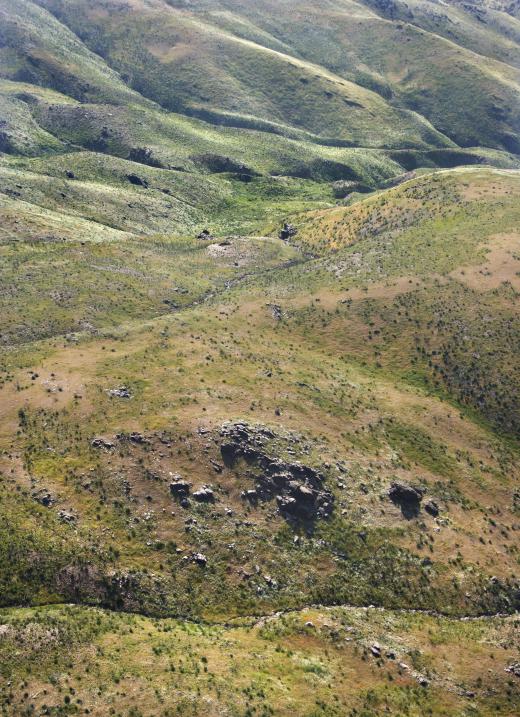What is a Thematic Map?
 Mary McMahon
Mary McMahon
A thematic map is a geographic map that also conveys data about a theme relevant to the geographic area depicted. Thematic maps display information visually and can be used to quickly convey important points of information in a highly accessible way. There are a wide range of uses for thematic maps, ranging from epidemiology to politics, and a number of software products can be used to make these maps.
Several techniques are used in the production of thematic maps. One of the most widely known is a choropleth map, where various areas on a thematic map are colored or shaded to represent visual information. Many people have seen this type of thematic mapping on the morning after election day, when many news sources provide information about how various communities voted with a shaded map. The shades can be varied to reflect intensity, as for example in a map showing the strength of democratic or republican votes in various communities in the United States.

Proportional mapping is also used. In a proportional thematic map, geographic features may be distorted to provide information, or the symbols used on the map can vary by proportion. A map showing global energy use might scale different countries in line with the proportion of energy they use, for instance, while a map showing the size of global cities can use differently sized dots to indicate proportional size.
Dot maps, where information is presented in clusters of dots, are another type of thematic map. Visually representing information on such maps can provide information about where data points are concentrated and this information can prove very useful. Contour maps using contour lines to delineate information are another example of a thematic mapping technique. Gardening zones are often shown on a contour map to allow people to find their location and see which zone it is in.
Map design can get complicated, especially when people want to show multiple datasets to illustrate the relationship between them. Cartography software provides options for generating thematic maps and people can also draw out their own maps if they have custom needs. The ability to convey data in a simple visual form with a thematic map is valuable in a wide variety of settings, from the classroom to the boardroom, and this technique has a long history of use. Even before people fully understood the geography of the world around them, they were making thematic maps to illustrate concepts, data, and other information.
AS FEATURED ON:
AS FEATURED ON:











Discussion Comments
I love to see the thematic weather maps on the weather channel. You can see how storms are moving across the country. The swirls of color show wind velocity and speed. You can see where a pattern of sunny weather begins and ends.
There's movement in these maps. It's interesting to watch the movement of a hurricane as it moves towards Florida and then where?
Kids in school just love thematic mapping. They can find them in an atlas, make their own or make them from software. They can show state populations from highest to lowest, natural resources, geographic features, and a whole lot more.
Using something visual like a thematic map can make it easier for kids to see relationships and discuss or write them down.
@SkyWhisperer - I like looking at a political map the day after an election to see how the nation voted. Of course you have the familiar red and blue to indicate how colors break down along political orientation.
What I find most fascinating is the district by district analysis, where you have the color purple. These are regions where there seems to be an equal blend of both political parties.
Some people have suggested that we are more a purple nation than strictly red and white – that is, we tend to be conservative on some issues and liberal on other issues. I don’t know if that’s true, but the political maps certainly convey a greater degree of subtlety and complexity than what you usually find in the hard left and right divide.
I worked as an analyst in a telecommunications company where we had to do a lot of thematic mapping.
We were mainly concerned with call distribution on the network. I used GIS mapping software to take data about call volume and plot it on a thematic map.
Different regions of the country were shaded with different colors, indicating the ranges for the volumes of calls made on the network. Executives loved this kind of map, because at a glance they could tell where the call volume was.
It was easier to make sense of the data using a map rather than just looking at a large spreadsheet full of numbers. Furthermore, I was able to hone in further on the data, and create additional layers to the map, indicating further subdivisions of the data like what time of the day those calls were made.
Those layers appeared as separate icons-or anything I wanted really. It was a rich, visual display of useful information.
Post your comments